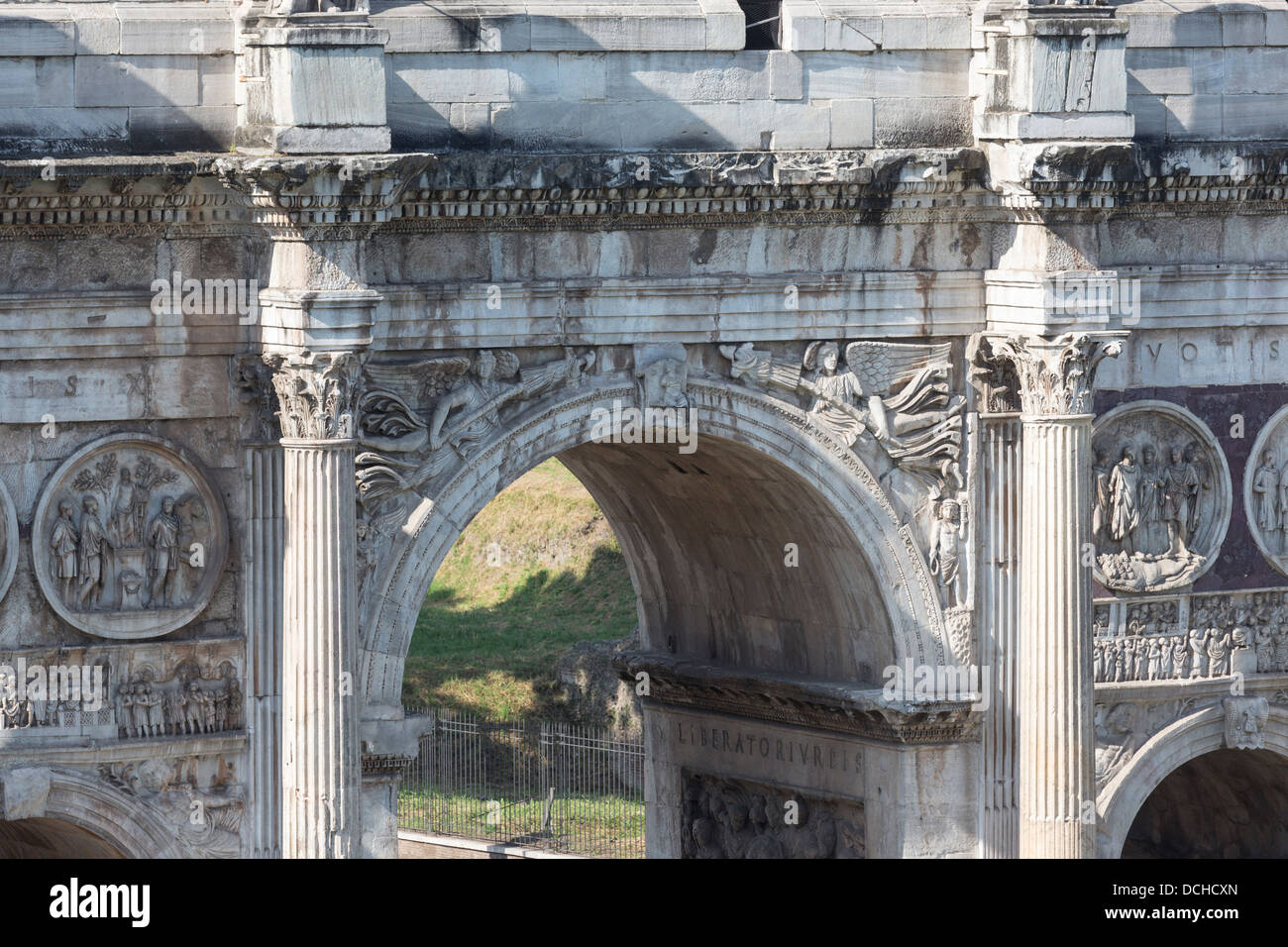detail of the Arch of Constantine, Rome, Italy

Image details
Contributor:
B.O'Kane / Alamy Stock PhotoImage ID:
DCHCXNFile size:
60.1 MB (3.2 MB Compressed download)Releases:
Model - no | Property - noDo I need a release?Dimensions:
5613 x 3742 px | 47.5 x 31.7 cm | 18.7 x 12.5 inches | 300dpiDate taken:
June 2013Location:
Rome, ItalyMore information:
The Arch of Constantine (Italian: Arco di Costantino) is a triumphal arch in Rome, situated between the Colosseum and the Palatine Hill. It was erected by the Roman Senate to commemorate Constantine I's victory over Maxentius at the Battle of Milvian Bridge on October 28, 312. Dedicated in 315, it is the latest of the existing triumphal arches in Rome, and the only one to make extensive use of spolia, re-using several major reliefs from 2nd century imperial monuments, which give a striking and famous stylistic contrast to the sculpture newly-created for the arch. The arch spans the Via Triumphalis, the way taken by the emperors when they entered the city in triumph. The arch is a famous exemplar, almost invariably cited in surveys of art history, of the stylistic changes of the 4th century, and the "collapse of the classical Greek canon of forms during the late Roman period". The contrast between the styles of the re-used Imperial reliefs of Trajan, Hadrian and Marcus Aurelius and those newly made for the arch is dramatic and, according to Ernst Kitzinger, "violent", although it should be noted that where the head of an earlier emperor was replaced by that of Constantine the artist was still able to achieve a "soft, delicate rendering of the face of Constantine" that was "a far cry from the dominant style of the workshop".[